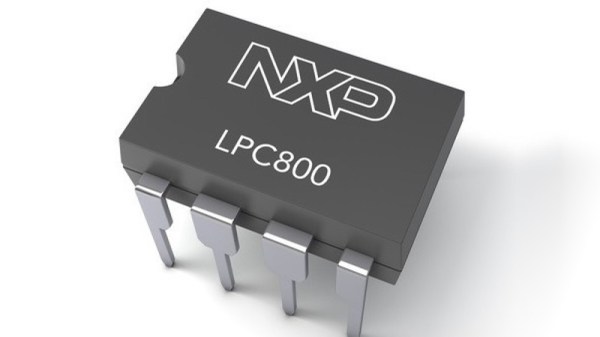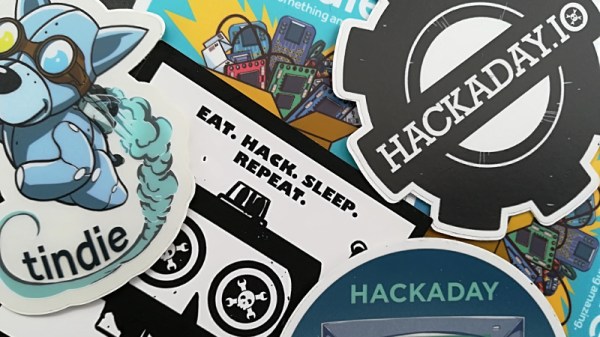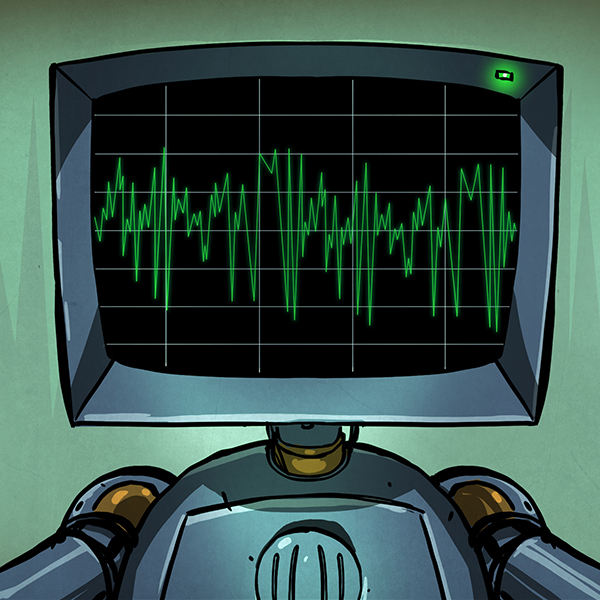Somewhere, in a storage closet used by every computer science or engineering program, is a robot arm. It’s there, you’ve probably never seen it, but it’s there. Originally, this hugely expensive robotic arm was intended to be a truly remarkable pedagogical tool, allowing students to learn about reverse kinematics and control systems. Now, most likely, that robotic arm is covered in dust, either because the arm itself is broken or because the only instructor that used it retired.
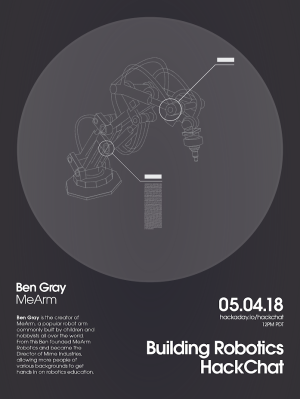 These days, robotic arms are within nearly everyone’s reach. Ben Gray’s MeArm is a popular robotic arm made out of laser cut acrylic and powered by hobby servos that anyone can put together. It’s the minimum viable robotic arm, and for this week’s Hack Chat, we’re going to be talking all about robot arms, what they can do, and how they can be used in education.
These days, robotic arms are within nearly everyone’s reach. Ben Gray’s MeArm is a popular robotic arm made out of laser cut acrylic and powered by hobby servos that anyone can put together. It’s the minimum viable robotic arm, and for this week’s Hack Chat, we’re going to be talking all about robot arms, what they can do, and how they can be used in education.
During this Hack Chat, we’ll be discussing the ins and outs of reverse kinematics and manufacturing robot kits with Ben. We’ll also be talking about Ben’s current efforts to get people of various backgrounds in on robotics education. Topics that will be covered include:
- designing and manufacturing the MeArm
- robotic arms
- robotics kits
- robots made for hacking
You are, of course, encouraged to add your own questions to the discussion. You can do that by leaving a comment on the Hack Chat Event Page and we’ll put that in the queue for the Hack Chat discussion.
Our Hack Chats are live community events on the Hackaday.io Hack Chat group messaging. This week is just like any other, and we’ll be gathering ’round our video terminals at noon, Pacific, on Friday, May 4th. Here’s a clock counting down the time until the Hack Chat starts.
Click that speech bubble to the right, and you’ll be taken directly to the Hack Chat group on Hackaday.io.
You don’t have to wait until Friday; join whenever you want and you can see what the community is talking about.


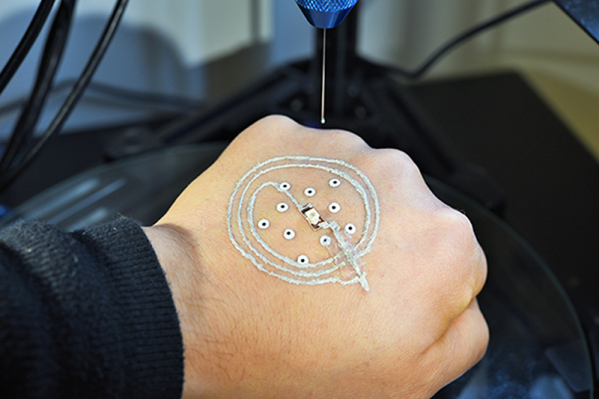



![You can tell [Dr. Seuss] is thinking about his next volume: <em>How The Grinch Stole Whoville Hackspace</em>. Al Ravenna, World Telegram [Public domain].](https://hackaday.com/wp-content/uploads/2018/02/1003px-ted_geisel_nywts.jpg?w=392)
